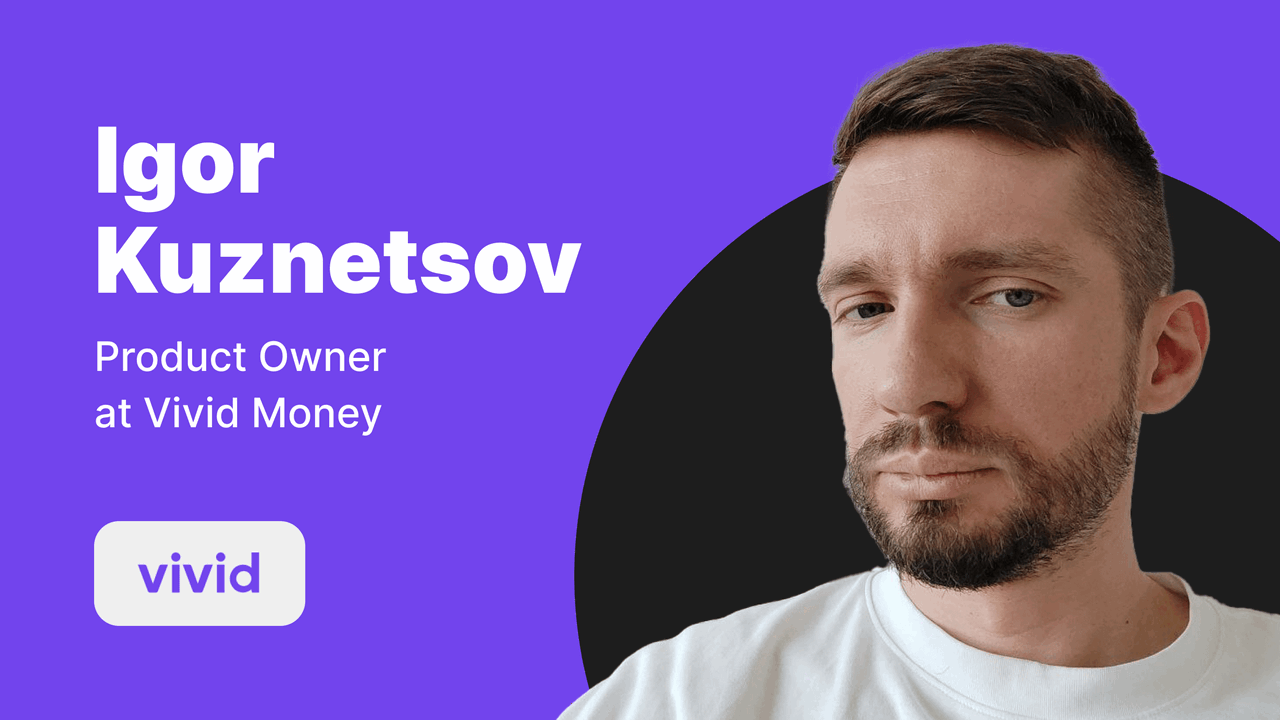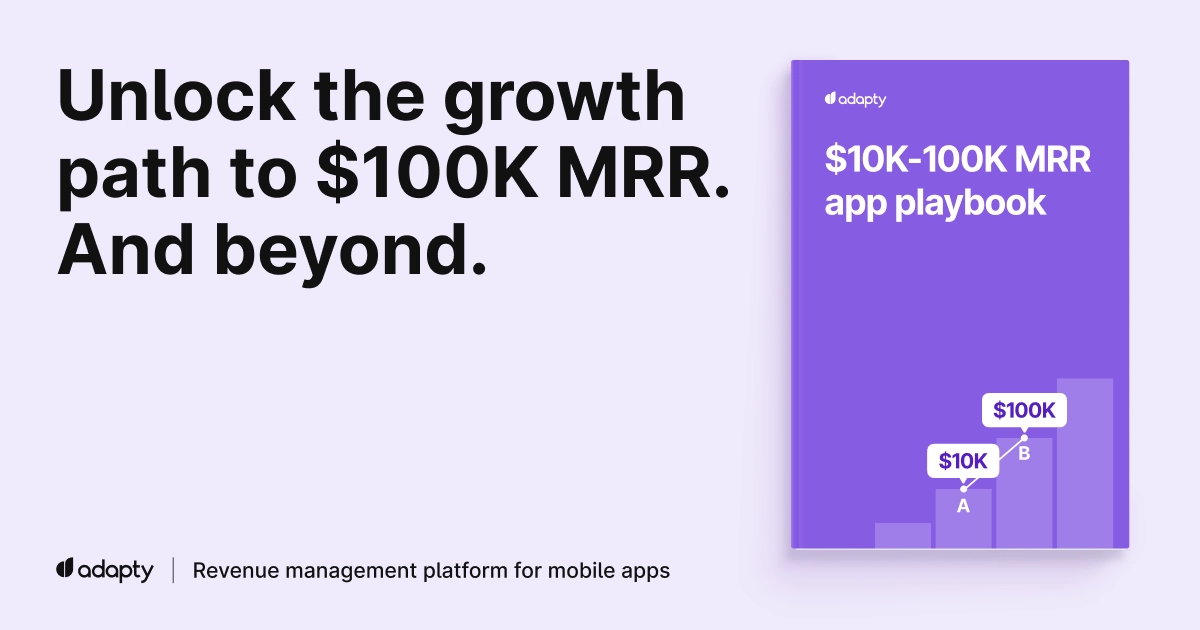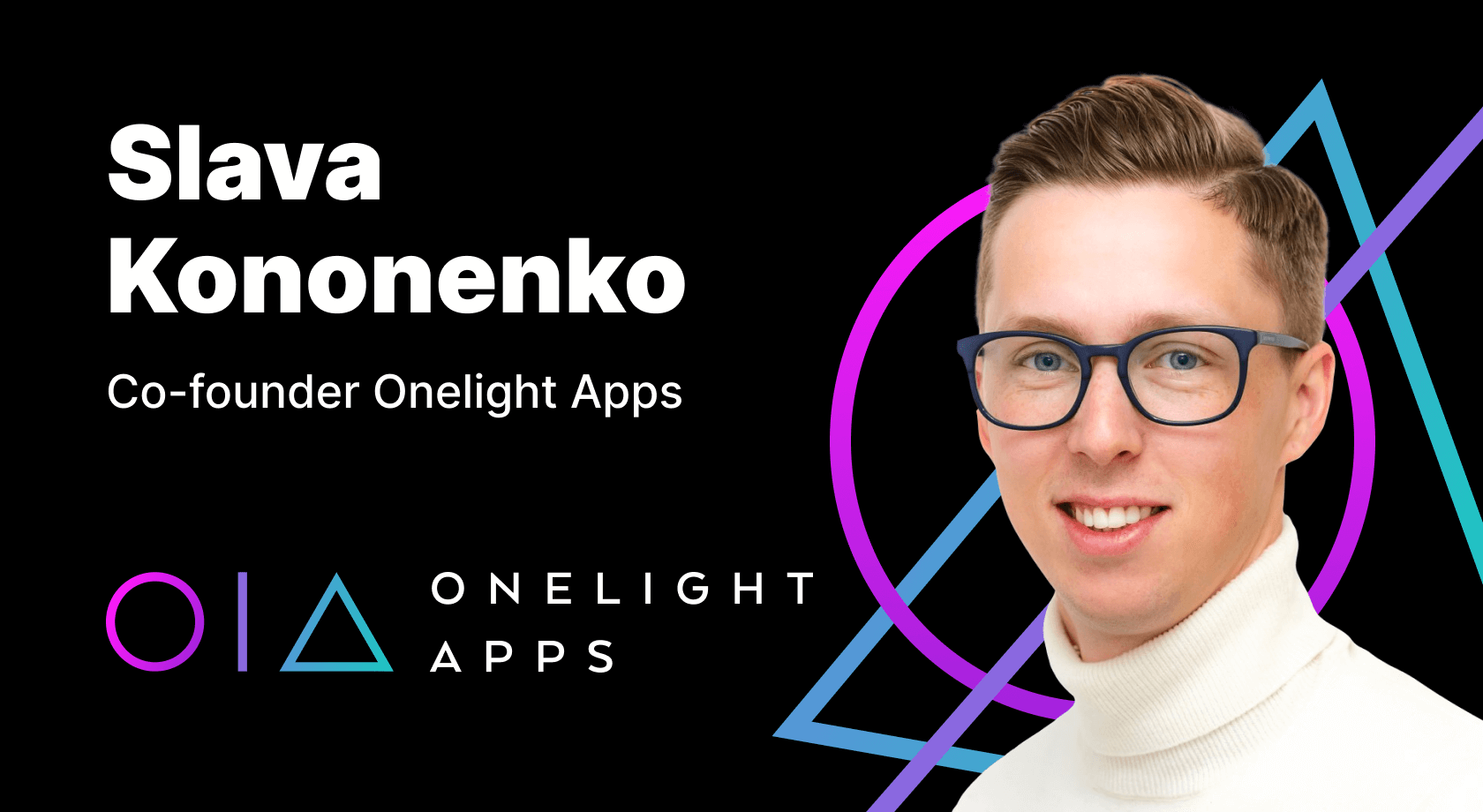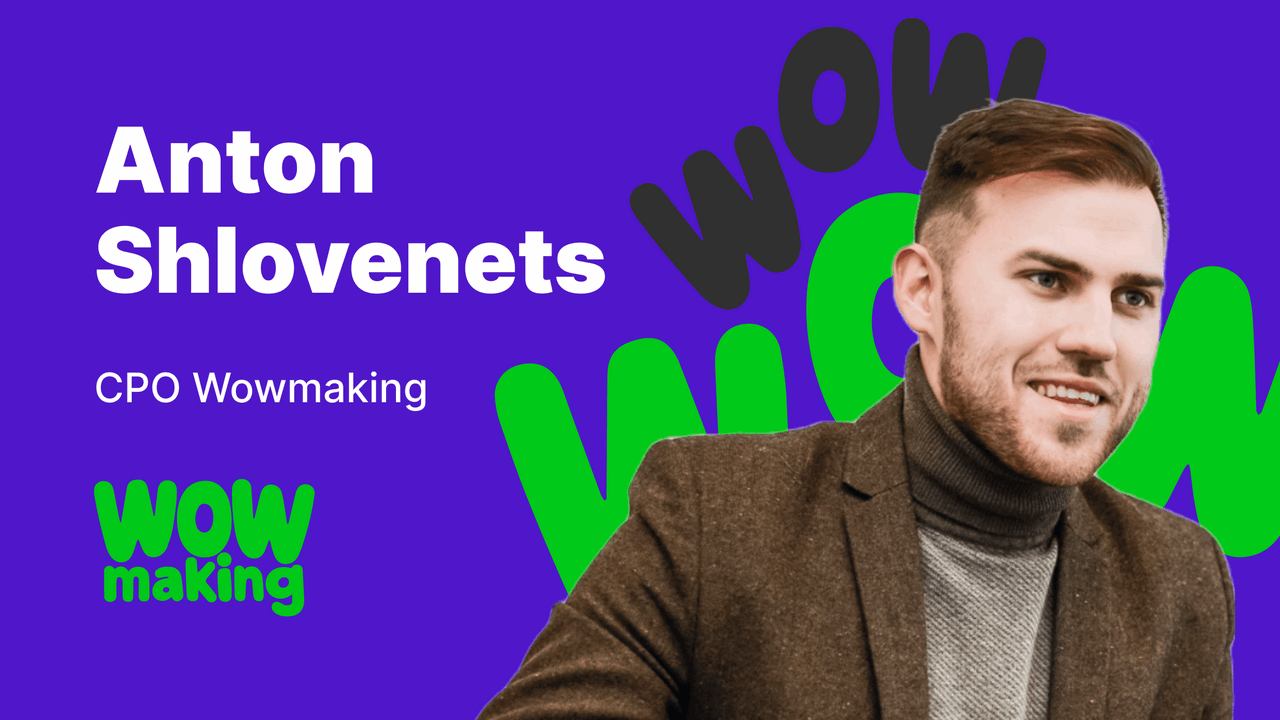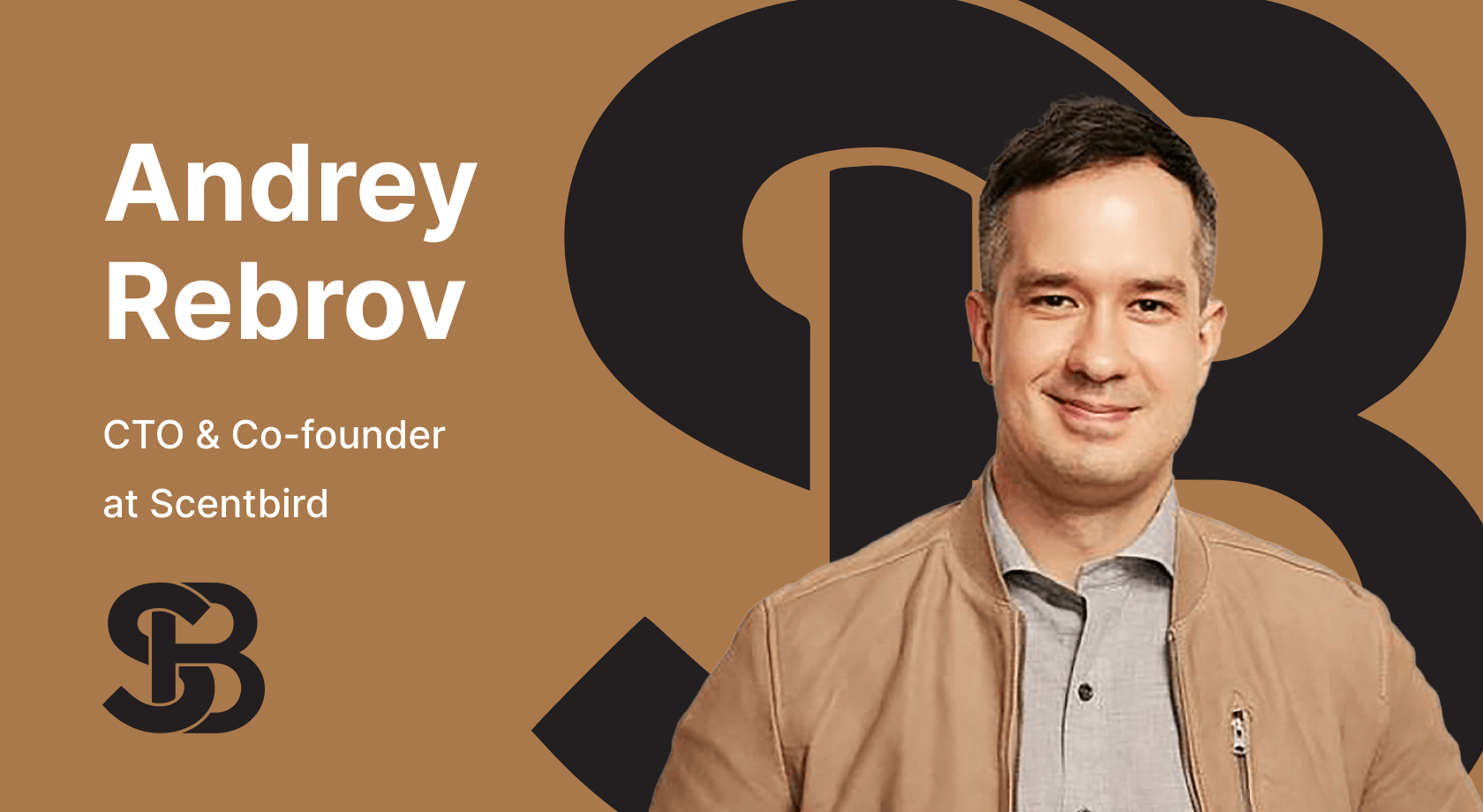Many app developers turn to misleading tricks in order to gain more profit from their users by any means. Such tricks are often called dark patterns, but did you know that some of them are legal and even have become standard these days?!
In the 16th episode of the SubHub podcast, we talk to Igor Kuznetsov, Product Owner at Vivid Money. He shares with us his experience in the sphere of dating apps, growing a EU-oriented banking service, and dealing with dark patterns almost on a daily basis!
Listen to the episode in Russian or read the most interesting parts below in English.
Meeting the guest
Nikita Maydanov: Our today’s guest is Igor Kuznetsov, Product Owner of Vivid Money, and also the creator of a very popular Telegram channel about dark patterns. Tell us a little about yourself, about your professional path. How did you start and how did you end up in Vivid Money? Why did you begin talking about dark patterns?
Igor Kuznetsov: Well, it started more than ten years ago, when the first version of the AppStore appeared. Me and my friend from Look At Me made a small game studio of just five people. We’d been making mobile games before the Freemium model appeared. We were making classic paid one-two-dollar games, with some kind of free light versions. Back then, I didn’t know that what I was doing was called being a product manager. Anyway, that’s where I started.
Then we couldn’t adapt to the Freemium model, because at that time, large and serious developers came to the mobile game market. By then, I’d been engaged in games for five years, and got a little tired of it. So I decided to switch to working with software.
I had an offer to join Kamagames, a gamedev company, but they had two non-game projects. One of them was a messenger, something like Telegram, and they wanted me to help launch it. Telegram had just appeared, so they tried to compete with it using some interesting features. I worked with them for some time, and later I got the opportunity to join the Badoo team, where I probably had the most experience, since I joined them at the stage when the company was already quite large, about 150-200 people.
Badoo and dating apps
Igor Kuznetsov: It was in 2015-2016. At that time, Badoo was a serious business that was nine years old. But at the same time, the product team was quite small, and the corporate culture was only being formed. When I joined, they had only one or two product managers, and the rest were more likely project managers who simply did what the founders said.
I had an opportunity to work on different parts of the app, from the first session and monetization, to paywall optimization, almost everything except messenger experience. I worked a lot with profile verification, and this is one of the main problems in dating apps – fake profiles. So one of the features that I’m proud of was photo-verification. Basically, you ask the user to show a certain gesture and take a selfie. Then this photo is used as a reference one and no one except moderators can see it, but all the other photos in the profile are compared with it. And now this feature has become the standard for dating apps.
The main experience of being a product owner I had in Badoo, because there it was possible to run all the A/B tests on a large amount of data, without fooling around with any user interviews and corridor tests. We just chose a country, ran the test, and in two or three days we had stat significant results. We had a “conveyor” for the features production in different directions: retention, monetization, and other metrics we had to grow depending on the goals of the company.
When I joined the company, I was engaged in the recovery of the web service, and when I was leaving, on the contrary, my last project was to refresh the mobile version, it was old and needed to be updated. For 10 years there happened to be so many features that we weren’t sure were working or making any profit, and we wondered if we could get rid of them without losing the profit. It was a large and serious project, which we were engaged in for about six months, probably with the whole company. Everything was based on A/B testing. We had release cycles on the mobile web twice a day and once a week on Windows Phone. This made it possible to test the hypotheses very quickly and safely. We also had the White-Label testing. There were several products that Badoo had bought earlier, and theiet value was lost to support them as separate products. It was basically a channel for user acquisition. It was the same Badoo, just with a different logo and a separate user base.
So we tested everything on White-Labels on iOS, on Android, to be sure that nothing should fail, and on X-day launched the update on Badoo. This was the last project that I’m really proud of, because not only it didn’t drop, but it managed to grow key metrics such as the number of matches and the number of chat rooms created. Usually, large redesign updates, rolled out with no evolutionary approach behind it, result in closing the company. As it happened to Secret and their desperate attempts to change something to survive. But in our case everything worked out very smoothly.
After that I had several small projects, where I acted as a person who assembled a team and helped to launch the project. It was an e-commerce project called Swiftgift – a social network for poker players. It was the company called My Partypoker, which was the second or third in size in terms of poker offline tournaments. They also had another crypt-related project – a wallet for players who receive payments from these tournaments. So I began working on a small, pocket Revolut clone. But it had 1% of Revolut functionality, it was just a wallet with registration, KYC, funds withdrawal and crypt purchasing through some partner. When the project was almost ready to launch, I was offered to join Vivid Money, as I already had a little fintech experience, but very superficial. But they wanted me to work with the entire mobile experience.
Vivid Money and its competitors
Igor Kuznetsov: Our company structure implies several teams working in parallel in different business areas: crypt, daily-banking, loans, shares, and some other financial products. All this is built on different partnerships. The banking part is one partner, the broker part is another partner. But we’re under the same roof for the end client – just one app. The user doesn’t see the “stitches” as which part of the app is integration with one partner, and which with another. It’s all just like one super-app. At the moment we work in Germany, France, Italy, Spain and Portugal.
Vitaly Davydov: Awesome! But do you compete with something like N26 and such-like services?
Igor Kuznetsov: In fact, yes. Depending on each particular country, there are local competitors, but they’re different for each market. N26 tried to get out of Germany to America, they had an ambition to somehow jump there, but they failed and stopped this initiative. Revolut had the same intention. They’re an English company that has a version for the EU, but there is a lot of functionality that’s not adapted to the EU countries. In Europe, almost all the payments are carried out with the IBAN (International bank account number), not with the phone number or by the card number, as in many other countries. Sending money to friends, receiving salary or paying for Netflix, all is done through IBAN. Revolut is presented in Europe, you can download the app and register, but it doesn’t process the IBAN payments, so you can use it as some kind of second, third or even fourth bank. Maybe put some money there to use during a trip to another country, but this cannot become your main bank. But in our case, we’re fully localized to the countries we’re presented in.
Dark patterns. What are they?
Vitaly Davydov: You have quite a rich experience. Now tell us at what moment in your life did dark patterns appear?
Igor Kuznetsov: In fact, they are everywhere in everyone’s life. Every day we come across, one way or another, interfaces where there’s a great temptation to cheat, push the user to the action that the business needs, not the user. But most of all I saw enough of this, of course, in the dating segment, in Badoo particularly. Because at that time it was one of the main areas where you had a subscription monetization scheme. Dating apps stood a little apart, because they used both in-apps and subscriptions, and even ads at some point. It was five or six years ago. Badoo by that time already could boast all sorts of “dark” approaches. I didn’t know then that it was called dark patterns, I didn’t think that it was bad or good, it was just a way to increase conversion, as it still is.
Initially, the invitation flow on the web and on mobile was borrowed from LinkedIn. At one time, we came up with some kind of hacks with both Twitter and Facebook. I know that some part of the Twitter API got directly deprecated, because Badoo used it so hard that they turned it off for everyone so that this would never happen.
I began to think about the ethics of this whole story probably after I parted ways with Badoo. I somehow accidentally stumbled upon some article by Harry Brinul about the term “dark patterns” and about its definition. I formulated the definition for myself in the way that it’s such a UX, such an interface and user flow that pushes a person to take the action that the business needs, and not the person. There’s always a conflict of interest, so to say: the user wants everything to be cheaper or even free, the business needs to grow and have a larger profit margin, because apart from getting personal profit, the business needs to pay for operating expenses. So the user is often pushed to take actions that are needed by the business, and it’s often the case of dark patterns.
Vitaly Davydov: Let’s figure it out. Is there any difference between a dark pattern, mislead and hack?
Igor Kuznetsov: Using a mislead you’re clearly lying, you say: “Press this button and get $1.000 for free right now!” and instead you get a link to a porn site. This is an obvious mislead. There is a very thin line between a hack and a dark pattern, or perhaps it doesn’t exist in some cases. Maybe in the case of a hack, you come up with an understandable, honest interface for the user, but just no one on the market has ever thought of making a product this way. You came up with a new channel. An example is this SuperHuman mail app: it can be called a hack that they started selling personal software through personal onboarding, literally leading the user by the hand, right up to filling out the card data. No one ever thought of doing it this way. But this is not a dark pattern, the user can opt out at any time during the process.
Dark patterns are still somewhere on the verge between a hack and a mislead, where you think that one thing will happen, but something else happens. And this is an implicit mislead, it’s just you not paying enough attention.
Vitaly Davydov: Is using dark patterns a bad thing?
Igor Kuznetsov: In theory, it’s bad, but in practice, for small and medium-sized companies, this is perhaps the only way to be competitive. The best competitive advantage is an unfair advantage that is very hard to replicate. You can call it a hack when you find an approach that others cannot replicate. And dark patterns are pretty much about this. When huge companies with a lot of resources and huge professional teams come to the market, it’s impossible to compete with them honestly, just by making cool gameplay. The reality is that the use of dark patterns is perhaps one of the non-competitive advantages that allows a business to survive while it’s small. The bigger it gets, the more visible it gets, the more all these companies have to whitewash themselves. One way or another, everyone started with using such schemes. And the more you attract attention from users, critics, journalists, platforms like the App Store, Google Play, the bigger you get on the radar, the less tricks you can do. And you have to become more and more honest and user-friendly.
Nikita Maidanov: How do you classify dark patterns, are there different degrees of darkness among them?
Igor Kuznetsov: Brinul, who coined this term, he has a classification. It doesn;t include everything, and I’m not a fan of this classification. But from what I see, when I started somehow collecting everything and recording it in the channel, I realized that some cases did not fit his classification. I’m not engaged in the description of everything in the world, so that it must be classified. I’m aware that my channel is read by those who want to emphasize this knowledge and apply these dark patterns, and those who want to understand them, on the contrary, to be aware of them as a user and never use them in their product.
Personal Telegram channel on dark patterns
Nikita Maidanov: Let’s go back a little. You read about dark patterns and started collecting examples for your channel, but how did it all start?
Igor Kuznetsov: For a long time I had this channel, which was only for three friends of mine. I just started this channel in order to store interesting articles somewhere for myself and share them with friends. At first, these were just articles without topics, not even about dark patterns, just what was useful to me in the product industry.
And after a while, I wrote something about dark patterns, a mini-post. One of my friends reposted me. He had a huge Telegram channel with a super-loyal, active audience. Immediately in a day, my channel grew from 10 subscribers to 600. And somehow I began to take this more seriously: “Oh, people came to read specifically about this.” They immediately started sending me examples of what they found in terms of dark patterns in different apps. And I began to write more and collect the examples.
Nikita Maidanov: You post to your channel almost every other day. Where do you get so many examples: are they sent to you or do you just use so many different products?
Igor Kuznetsov: Sent, mostly. Sometimes I search, there is some community on Reddit called Bullshit design or Asshole design. Most of what I post I find myself. It’s just that my brain has learned to notice it already. It’s not that I go and look for dark patterns deliberately. I just got used to noticing them since the days of Badoo. I had all kinds of dating apps installed, registered everywhere, created fake profiles and tried to understand how they worked.
Vitaly Davydov: Fake profiles, that’s important.
Igor Kuznetsov: It doesn’t matter much, I can easily post my pictures. I just realized at some point one thing: in Badoo, if someone from our competitors registered in our service, we placed them in a certain sandbox so that they wouldn’t see our coolest features.
Vitaly Davydov: Wow!
Igor Kuznetsov: So I realized that maybe other guys have the same thing in their dating apps, and therefore I began to make fake profiles.
Can dark patterns be used in the long term?
Vitaly Davydov: If we’re talking about dark patterns specifically in mobile apps, specifically with subscriptions, are there any dark patterns that have a long-term effect that you have seen? For example, is there a dark pattern that improves subscription retention in the long term?
Igor Kuznetsov: I haven’t dealt with subscription-based apps for a long time. From what I saw, it may not be new now, it has already become a standard. A lot of very subscription apps have this warm-up funnel where you have an onboarding that ends with a paywall. Some apps first ask you a series of questions and say: “Now we’re personalizing the experience for you” and show the paywall. In fact, there’s no personalization there, maybe the adjustment of push notification frequency at best. Everyone uses it now, all apps with subscriptions: fitness, meditation, etc.
The second moment is the paywall closing. To make it more difficult to skip the paywall, someone came up with this close button, it first migrated from the explicit “Close paywall” button to a cross somewhere in the corner, and then this cross began to appear on a timer. You get a paywall after onboarding, it doesn’t have a close button. It appears after five or ten seconds, but first you have enough time to freak out because there’s no way to go further than to start the trial.
And, of course, there’s price manipulation. Where they describe the price for a month, but bill you for a year, for example.
Vitaly Davydov: Does this somehow affect the user in the long term, how do you think?
Igor Kuznetsov: Probably, it does. If the product is good, and it does the job the user came to the app for, the churn won’t be that high. I know from the dating apps that the number of subscriptions and your daily revenue is a function of how many times you show the subscription screen. But it’s important to show them wisely and think of proper entry points.
Nikita Maidanov: Is the paywall Continue button that makes you purchase a subscription a dark pattern or not?
Igor Kuznetsov: Here the line is very thin. It used to be a dark pattern, but now it’s the new normal. Now even Apple uses it on the paywalls of the Apple Arcade apps and iCloud. It seems to have become a standard.
Nikita Maidanov: Yes, Apple does many things like that. Put the subscription button in settings, for example. But It’s also interesting that sometimes there are methods that aren’t dark patterns, at least at first glance. From a recent example, I can think of Blinklist with a reminder about the end of the trial. In theory, it only gives more transparency to the user, because they understand that the trial will end, but in fact it works better in terms of cancellations. They showed that they had a decrease in cancellations and an increase in the conversion of allowing push notifications.
Igor Kuznetsov: I can’t confirm or deny this. For example, I know that it’s a good practice that the ATT dialogue needs a preview screen that explains why you are asking this. And I’ve tried to use this several times myself, but it didn’t work. My friends who work with other products also said that this preview screen didn’t grow their conversions. In theory, yes, but in fact, I have not seen a single living person who would confirm this.
In Badoo, we had these push notifications on the home screen and everything worked, but when we started making separate screens with explanations of each permission, conversions started to go down. I don’t know how to explain this, except that the user simply clicks to skip it all and agree as quickly as possible. Regarding the first example, I can neither confirm nor deny, but it seems to me that the logic behind this is such that you are more honest with the user, and it may work.
Dark patterns in ads and creatives
Vitaly Davydov: Let’s talk a little about another topic – dark patterns and misleads in advertising and creatives. Can you say something about it?
Igor Kuznetsov: In fact, a lot comes from games, and even more from Chinese games. All mobile games in the world now look like Chinese ones. They’ve come to the point where what’s shown in the ad is absolutely different from what’s inside the app. You may watch a 3D shooter ad with half-naked women in it, and the game turns out to be a farm with flowerbeds. They do this, because the longer you keep the user on the video, the more likely it is that they will convert. And of course they get paid when the whole ad is watched.
Some companies use creatives that “play” with the Close button, hiding it in the corner or even disguising it with something like spider web. It’s a dark pattern, and this can be checked by an advertising platform, like Facebook, that should make sure the ads posted are not misleading. But how in practice advertising platforms, as well as app platforms, can deal with this is still not clear. They made some kind of rule, but I haven’t seen a single punishing case.
I don’t use products that show interactive ads much, so I rarely come across them and I didn’t see many examples there with dark patterns. From what I’ve seen, most of the time it’s just a little staged session that’s usually close to the actual gameplay. Although, I also had a case once when the interactive ad and the real gameplay were absolutely different.
Nikita Maidanov: Lately it seems that many are trying or even successfully integrating the web-to-app approach, where they lead the user from the ad to make a purchase on the web, not through the app store. But then you can read a lot of reviews in the App Store, saying: “I don’t understand how to cancel my subscription. I don’t have a subscription in the App Store.” Do you think this is normal and will it somehow be regulated?
Igor Kuznetsov: I know that this is a working scheme and it converts well on the web. At the same time, you don’t pay any commission to Apple or Google, it’s an obvious win. But usually these purchases are processed through something like Stripe, and they still take some commission. But they as well send a letter to the user, stating that a subscription has been purchased. And you get a letter describing clearly how to unsubscribe. But not all read their emails or pay enough attention to it.
Another problem is double subscription. The user may subscribe on the web but later when trying to log in into the app, they get confused and think they have to purchase the subscription once again. And this leads to a huge amount of negative comments.
But I don’t really know how this can be regulated, because on the contrary, everything seems to be going in the direction that both Apple and Google are becoming less monopolist in terms of payments. For example, in some countries, Netflix began putting a link to the web view directly on the paywall buttons, which opens inside the app or in the browser.
I also think that it may rather lead to new problems, because when following a link somewhere, the user can get anywhere else. And even if the app goes through the content review, it’s still a link on the web, you can replace it with new content at any time. Now everyone is happy that Apple and Google will soon cease to be monopolists, but this opens up more opportunities for fraud and huge commissions on the web.
Conclusion and advice
Nikita Maidanov: In your opinion, is it real to make a subscription app in 2022 and not use dark patterns at all?
Igor Kuznetsov: I think so. It depends on what the real value of the product is. If it’s really so off scale that you have no competitors at the moment, then it’s more than possible. Back in the days, HeadSpace was the first, and Calm was catching up, but they overtook them and became the number one meditation app, because they could find a better approach.
But once the competition comes into play, those shades of gray kick in. If Apple does this in their iCloud and Apple arcade apps, maybe I shall do this too, why not? It’s all about general observation, about understanding that in the long run using dark patterns will still affect your image.
Nikita Maidanov: What advice would you give to fresh product owners and app developers? Should they consider studying dark patterns?
Igor Kuznetsov: It’s not so important to study dark patterns as it’s important to study good UI / UX. If you’ve chosen this profession, you have to do it. If you don’t have this knowledge, then you are losing a lot as a specialist, compared to those who pay attention to this. Of course there’s always a business strategy that comes from the top-team, but it’s entirely up to you to optimize your app in terms of interface and improve your business metrics. You’re a bad product if you don’t pay enough attention to your interface. You are a normal one if you look at competitors. And you are at the God level if you bring expertise from other spheres.
Since we’ve talked a lot about subscription screens I’d also mention the channel that I read, it’s called Pimp my paywall in Telegram. It’s very good in terms of seeing the onboarding funnels and paywall screens. You can pump very well by watching all the tricks, both honest and dark.
Vitaly Davydov: This is a cool channel, we also read it. And we also have a newsletter, where we send new hot paywalls with analytics once a month, so you can also subscribe to it. Cool, thank you very much for coming!
Igor Kuznetsov: Thank you very much for inviting me, I was glad to talk to you!
